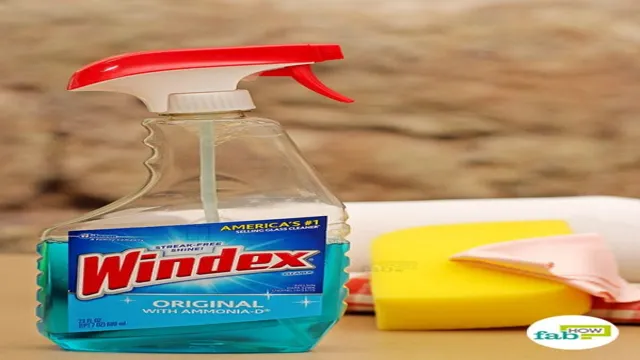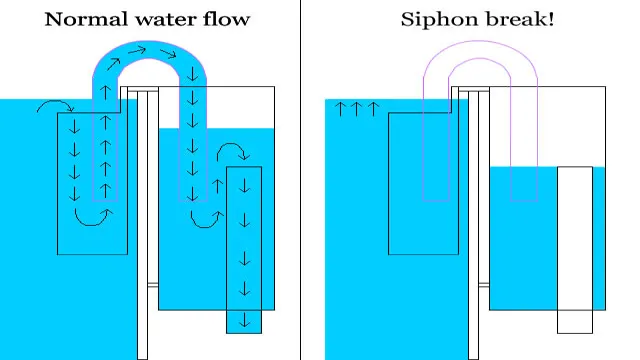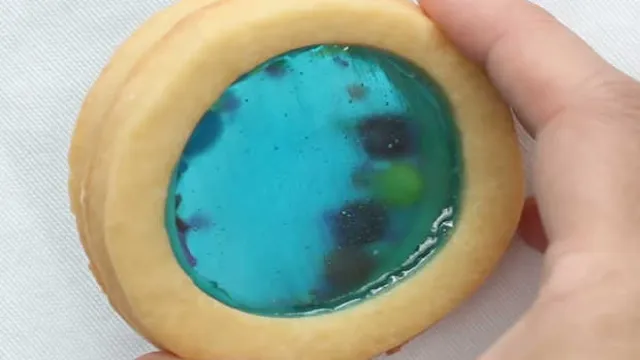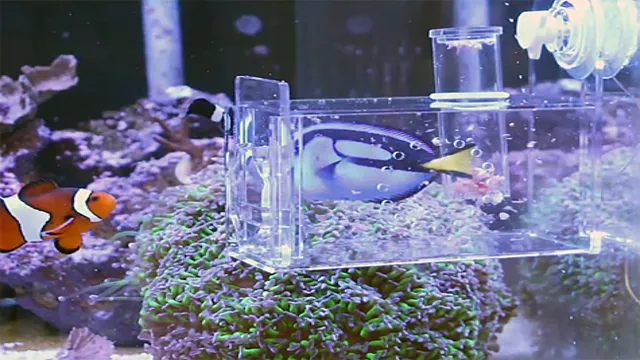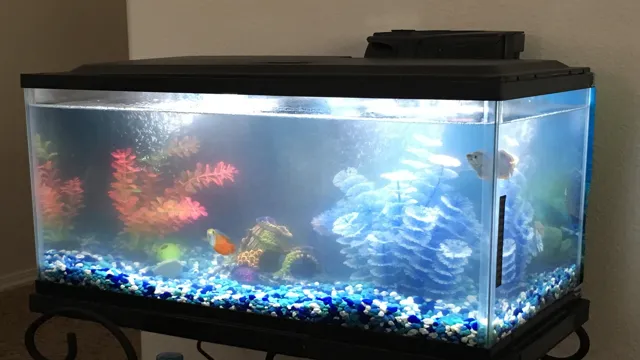Are you a newcomer to the world of aquariums? If so, you may have accidentally sprayed Windex on your aquarium glass instead of your regular glass cleaner, and now you’re wondering how to remove it without harming your aquatic pets. Don’t fret, we’ve got you covered. Windex is not safe for aquatic life and can harm or even kill your fish, snails, and plants.
But removing it safely is not difficult with a few simple steps. First, stop using Windex and avoid any abrasive cleaners that can scratch your aquarium glass. Next, carefully drain the water and transfer your aquatic pets to a temporary container with clean water.
Once your aquarium is empty, use a fresh, damp cloth to gently wipe the glass and remove any residue. Avoid using any chemicals or soaps as these can contaminate the water and endanger your aquatic pets. Once the glass is clean, rinse it thoroughly with fresh water, and repeat the process if necessary until the Windex smell dissipates.
Before refilling the aquarium with water, wash all decorations and other items thoroughly using a damp cloth and clean water. Finally, refill the aquarium with dechlorinated water, add the aquatic life back carefully, and ensure the water is at the right temperature and pH levels. In conclusion, removing Windex from your aquarium safely is easy with a few simple steps.
Remember, prevention is better than cure, so always be careful when cleaning your aquarium and avoid any harsh chemicals and abrasive cleaners that can harm your aquatic pets. Happy fishkeeping!
Understanding the Risks
When it comes to cleaning your aquarium, it’s important to understand the risks involved if you accidentally use a product like Windex. Windex contains ammonia, which is harmful to aquatic life. This means that if Windex gets into your aquarium water, it could harm or even kill your fish, plants, and other important organisms.
So, how do you clean Windex from your aquarium? Firstly, it’s essential to act quickly if you’ve accidentally used Windex on or near your aquarium. Start by removing any affected fish or plants from the water and placing them in a bucket or separate tank. Then, drain and replace the contaminated water in your aquarium with fresh, dechlorinated water.
You should also rinse any aquarium decorations or equipment that may have come into contact with the Windex. It’s important to always read labels and understand the risks involved when using cleaning products around your aquarium. By taking the necessary precautions, you can ensure the health and safety of your aquatic pets and plants.
The Dangers of Windex in Aquariums
The use of Windex in aquariums can pose several risks to the aquatic animals living inside. Windex contains ammonia, which is toxic to fish and other aquatic life. When sprayed onto the glass of the aquarium, the fumes can also enter the water and harm the fish.
Even small amounts of Windex can be detrimental to the health of your fish, causing stress and illness. It’s crucial to avoid using any household cleaners that contain ammonia when cleaning your aquarium. Instead, opt for aquarium-safe cleaners or use vinegar and water as a natural alternative.
Your fish will thank you for it!

The Importance of Proper Clean-up Procedures
Proper clean-up procedures are highly important for a safe and healthy environment. Understanding the risks involved with improper clean-up is crucial to prevent harmful situations. For example, if a spill of harmful chemicals occurs and is not cleaned up properly, it can cause harm to human health, the environment, and wildlife.
It is important to follow strict protocols for cleaning up hazardous substances like chemicals and oil spills. Wearing protective clothing and using proper equipment is also essential to prevent health risks. We should always aim to maintain a clean and healthy environment to prevent any risks to ourselves and our surroundings. (See Also: How to Give Gish & Snail Cucumbers in Aquarium: A Step-by-Step Guide)
By taking the right steps to clean up or dispose of harmful substances, we can protect our planet and ourselves from harm.
Step-by-Step Guide
Cleaning your aquarium is crucial for the overall health and well-being of your fish and plants. Accidents can happen, and if you accidentally get Windex on the glass, it must be removed immediately. First, turn off all equipment and unplug any power sources.
Remove the fish and plants from the tank and place them in a clean, safe container. Next, remove any decor or gravel from the bottom. Using a clean, damp cloth or sponge, wipe the glass thoroughly, making sure to remove all traces of Windex.
Rinse the cloth or sponge frequently and repeat until all the Windex residue is gone. Once the glass is clean, rinse all decor and gravel thoroughly in clean water. Now, refill the aquarium with water and add all the decor and gravel.
Lastly, add dechlorinator and return the fish and plants to the tank. Remember to wait 24 hours before turning the equipment back on to give the dechlorinator time to work. With these steps, your aquarium will be clean and free from any harmful chemicals, ensuring the health and happiness of your aquatic pets.
Preparing for Clean-up
Preparing for a clean-up can be a daunting task, especially if you don’t know where to start. However, with a little bit of planning and organization, the process can be made much easier. The first step in preparing for a clean-up is to survey the area that needs to be cleaned.
Look for any hazards or potential dangers, and take note of any larger items that may require special handling. Once you have a good understanding of the area, it’s time to gather your cleaning supplies. Make sure you have plenty of garbage bags, cleaning agents, and any necessary tools, such as brooms or vacuums.
It’s also important to wear protective clothing, such as gloves and masks, to avoid any potential health risks. Finally, don’t forget to enlist the help of others. Cleaning can be a labor-intensive task, so having extra hands on deck can make the process go much more smoothly.
With a little bit of preparation and organization, you’ll be ready to tackle any clean-up job with ease.
Removing Windex Residue
If you’ve ever used Windex to clean your windows and mirrors, you know how frustrating it can be to remove the residue it often leaves behind. Luckily, there are several steps you can take to remove Windex residue and leave your surfaces sparkling clean. The first step is to mix equal parts vinegar and water in a spray bottle.
Spray the solution directly onto the affected area and let it sit for a few minutes. Then, wipe the surface with a clean, dry cloth. If the residue persists, you can try using a glass cleaner specifically designed to remove Windex residue.
Simply spray the cleaner onto the affected area and wipe away with a clean, dry cloth. With these steps, you can quickly and easily remove Windex residue and enjoy clean, streak-free windows and mirrors. (See Also: How to Put Air Pump in Aquarium: Easy Step-By-Step Guide for Beginner Fish Keepers.)
Rinsing and Drying the Aquarium
Rinsing and drying your aquarium is an essential step in maintaining the cleanliness and health of your fish. To begin, remove all decorations, plants, and substrate from the tank and set them aside. Next, use a bucket or hose to remove the water from the aquarium.
Be careful not to dislodge any remaining debris or waste from the bottom of the tank. Once all the water has been removed, use a siphon or scraper to remove any remaining dirt and debris from the bottom of the aquarium. Then, rinse the tank thoroughly with clean water, making sure to wash away any remaining debris or dirt.
After rinsing, it’s time to dry your aquarium. Use a clean, soft cloth to wipe down the inside and outside of the tank. Once the tank is dry, put back your plants, decorations, and substrate.
By following these simple steps, you can ensure that your aquarium stays clean and healthy for your fish to enjoy. Remember to rinse and dry your aquarium regularly to maintain optimal water quality and avoid the buildup of harmful bacteria.
Preventing Future Accidents
If you’re an aquarium owner, accidentally spraying Windex near your tank can be a nightmare. Windex contains chemicals that can harm fish and other aquatic life. So, if there’s a spill, you must act quickly to prevent any further damage.
First, move your fish to a different tank or container. Next, use a paper towel or cloth to immediately soak up as much of the Windex as possible. Rinse the affected area with cold water and repeat this process until the water runs clear.
You can also consider using activated carbon or a water conditioner to filter out any remaining chemicals. Remember to be careful when using cleaning products near your aquarium and avoid spraying anything nearby. By taking these steps, you can prevent future accidents and keep your aquarium healthy and safe for your fish.
Safe Cleaning Products for Aquariums
When it comes to cleaning your aquarium, it’s important to use safe and non-toxic products to prevent harm to both your fish and the environment. You may have used traditional cleaning products in the past, but these can often contain harmful chemicals that can be fatal to aquatic life. Luckily, there are now many safe cleaning products specifically designed for aquariums that are not only effective but also environmentally friendly.
These products are made with natural ingredients and do not contain any harsh chemicals that could harm your fish or the beneficial bacteria in your tank. Using safe cleaning products can help prevent future accidents and maintain a healthy and thriving aquarium ecosystem. So, the next time you go to clean your aquarium, make sure to use safe and non-toxic products to keep your fish happy and healthy.
Minimizing the Risk of Accidental Exposure
When it comes to minimizing the risk of accidental exposure, there are several important steps that should be taken to prevent future accidents. First and foremost, it’s important to be aware of potential hazards in the environment and take appropriate precautions. This may include wearing protective gear, such as gloves or a mask, when working with hazardous materials or in risky situations.
It’s also important to properly label and store chemicals and other materials in order to avoid confusion or mixing of incompatible substances. Additionally, regular training and education can help ensure that everyone involved is aware of best practices and potential risks in the workplace. By taking these proactive measures, we can help minimize the risk of accidents and ensure the safety of everyone involved. (See Also: How to Cure Constipation in My Aquarium Fish: Tips and Tricks for a Healthy Tank)
Conclusion
In conclusion, cleaning Windex from an aquarium requires some thinking outside the box (or rather, outside the glass). While it may be tempting to use traditional cleaning products to get the job done, it’s important to remember that aquarium creatures are sensitive to chemicals and require a delicate touch. To avoid harmful effects, try using vinegar and water to gently scrub away any residue.
Alternatively, opt for a specialized aquarium cleaner that won’t put your fishy friends in danger. Remember, a clean aquarium is a happy aquarium – just be sure to avoid any Windex-related mishaps in the future!”
FAQs
What should I do if I accidentally sprayed Windex in my aquarium?
If you accidentally sprayed Windex in your aquarium, immediately remove your fish and place them in a separate tank with fresh water. Perform a water change on your main tank, and use activated carbon to remove any chemical residue. Rinse all decorations and equipment thoroughly before placing them back in the tank.
Can Windex harm my fish?
Yes, Windex can harm your fish as it contains ammonia and other chemicals that are toxic to aquatic life. If your fish come into contact with Windex, it can cause irritation and even death if not addressed quickly.
What is the safest way to clean my aquarium glass?
To clean your aquarium glass safely, use a glass scraper specifically designed for aquariums. You can also use a soft cloth or sponge with warm water or vinegar. Avoid using any detergents or household cleaners, including Windex.
How often should I clean the glass on my aquarium?
It is recommended to clean the glass on your aquarium every 1 to 2 weeks to prevent algae buildup and to maintain optimal water clarity. However, this may vary depending on the size and type of your aquarium.
What can I use to clean the outside of my aquarium?
You can use a mild dish soap or vinegar and a soft damp cloth to clean the outside of your aquarium. Avoid using abrasive sponges or chemicals that may scratch or damage the glass.
Can Windex stain my aquarium glass?
Yes, Windex can leave behind a residue or film that may stain or damage your aquarium glass. It is important to avoid using any household cleaners on your aquarium glass, especially Windex.
How can I prevent the need to clean my aquarium glass as often?
To reduce the amount of cleaning needed on your aquarium glass, you can limit the amount of light your tank receives, maintain proper water parameters, and perform regular water changes. You can also add algae-eating fish or snails to your tank to help keep the glass clean.

